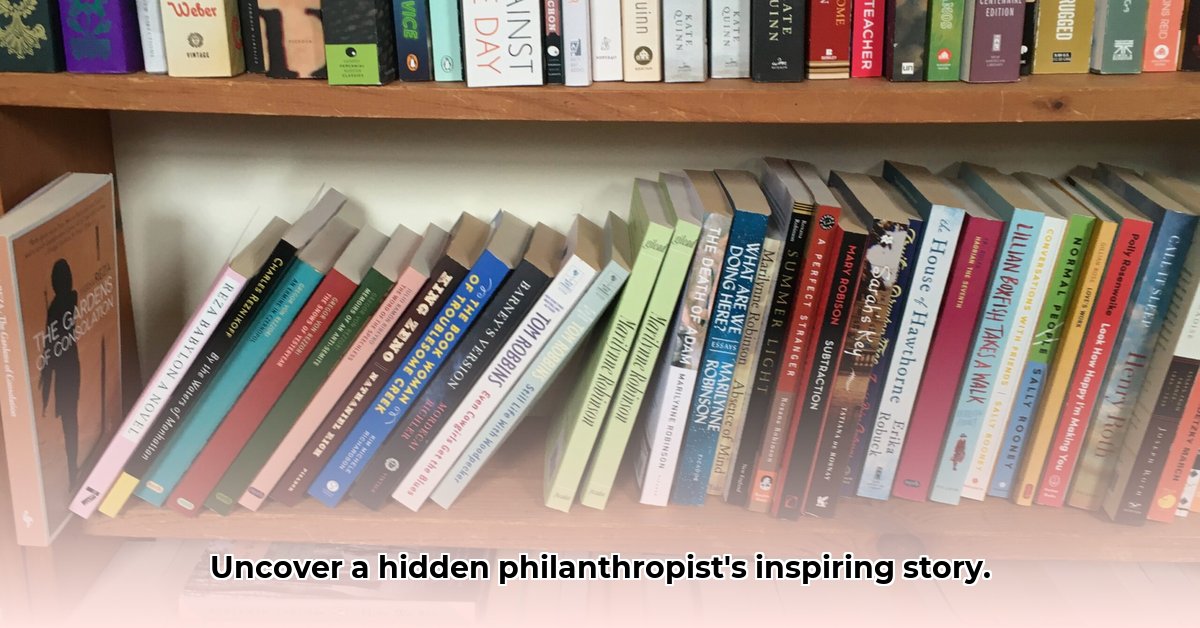Imagine piecing together a puzzle with missing pieces. That’s researching Elizabeth Mary Wilhelmina Bentinck. While details of her personal life are scarce, her dedication to women’s education and environmental protection is evident. This article explores the challenges of historical research and the detective work involved in uncovering her story, revealing a remarkable woman despite the missing information. Does uncovering her history justify the required effort? For a more complete picture, see her biography here.
Books About Elizabeth Mary Wilhelmina Bentinck: Unraveling a Philanthropic Mystery
Uncovering authentic books about Elizabeth Mary Wilhelmina remains elusive, it’s truly like working a difficult puzzle. Sources conflict on her birth year, with some suggesting the 19th century and others citing 1998. This discrepancy likely arises from her family’s wealth and emphasis on privacy. Despite the limited information, her impact is clear.
A Generous Spirit: Glimpses into Elizabeth’s Philanthropy
Despite limited personal details, Elizabeth’s generosity shines through. She dedicated resources to women’s education and environmental protection, reflecting her family’s values. Though detailed records are lacking, her actions demonstrate compassion and commitment. How significantly did her actions impact those around her?
The Challenges of Historical Research: Missing Pieces and Conflicting Accounts
Researching Elizabeth’s life presents unique difficulties. Historians rely on diaries and documents, which are scarce in her case. Reconstructing her life requires using secondhand information, which may be biased or inaccurate. We work with an incomplete picture, leaving the full image elusive. Secondary accounts require us to be extremely careful about what we conclude regarding her life’s work.
Ethical Considerations: Respecting Privacy vs. Public Interest
Investigating a private individual’s life raises ethical questions. How do we balance the public’s desire for knowledge with respecting privacy, especially with philanthropists who prefer to stay out of the spotlight? We must proceed with sensitivity and respect her or her family’s desire for privacy.
Uncovering the Truth: A Roadmap for Future Research
Solving the Elizabeth Mary Wilhelmina Bentinck mystery requires a planned approach.
Short-Term Goals (Within the next year):
- Focus on Verifiable Facts: Stick to confirmed information. Transparency about what we don’t know builds trust.
- Network and Collaborate: Connect with family or those connected to Elizabeth’s family to share information. Building trust at this stage is essential.
Long-Term Goals (Over the next 3-5 years):
- Develop Ethical Guidelines: Establish clearer guidelines for biographical research on private individuals, prioritizing privacy and avoiding misinformation.
- Create a Digital Archive: A central digital repository for Elizabeth-related information will benefit future researchers and family members.
What We Know (and Don’t Know) About Elizabeth: A Summary
The table summarizes our current knowledge and gaps needing to be filled. This will evolve as we investigate further.
| Aspect | What We Know | What We Don’t Know |
|---|---|---|
| Birth Year | Uncertain: 19th century or possibly 1998? | Exact birthdate and location |
| Education | Unknown | Details of her schooling, if any |
| Personal Life | Very little is known. | Marital status, children, friendships, etc. |
| Philanthropic Activities | Focused on women’s education and environmentalism | Specific organizations, the scale of her giving, etc. |
| Family Connections | Member of the prominent Bentinck family | Detailed family tree, close relationships within the family |
The Power of Unspoken Stories
The mystery surrounding Elizabeth’s life isn’t necessarily negative. Perhaps her quiet nature and desire for privacy were intentional. Her story reminds us that many philanthropists choose to operate quietly, allowing their actions to speak louder than words. Her contributions to education and the environment speak volumes about her values and her commitment to making a difference. While the full story of Elizabeth Mary Wilhelmina Bentinck remains elusive, her legacy of generosity serves as an inspiration. The quest to learn more about her continues, and future research must be conducted ethically and respectfully. How can future researchers best continue the work of documenting her life?
How to Ethically Research Private Philanthropists Like Elizabeth Bentinck
Key takeaways to remember:
- Elizabeth Mary Wilhelmina Bentinck’s life serves as a case study in how to ethically research private philanthropists. Limited public data necessitates nuanced investigation.
- Verifying contributions requires cross-referencing and contact with relevant organizations.
- Respect aristocratic family privacy, avoid intrusion.
- Acknowledge knowledge gaps to maintain integrity.
- Collaboration with family (with consent) ethically enriches research.
The Enigma of Elizabeth Mary Wilhelmina Bentinck
Tracing Elizabeth Mary Wilhelmina Bentinck’s charitable actions is challenging due to the scarcity of information, common when researching private individuals. How can we navigate this limited data and craft a compelling narrative, and continue to document the lives of people like her? The answer lies in ethical research practices, avoiding speculation.
Navigating the Challenges of Limited Data
Available online resources paint a partial picture. Mentions exist of her birthdate, family, and commitment to environmental and educational causes. Specifics remain elusive, making ethical research crucial. How can the research community work to help solve these issues?
Ethical Research Strategies: A Practical Guide
Here’s a practical guide to assist with ethical research of a persona:
- Start with Reliable Sources: Begin with archives and organizations tied to her philanthropic interests to establish a foundation .
- Respect Privacy: Avoid invasive actions and focus on public information.
- Transparency is Key: Acknowledge limitations.
- Consider Collaboration: If feasible, contact the Bentinck family or philanthropic organizations for access to private information with an ethical approach.
- Verify Information Meticulously: Cross-reference information.
- Contextualize: Understand the family’s history. How can more context be provided without potentially overstepping the boundaries of her privacy?
Uncovering the Legacy: A Balanced Approach
Elizabeth Mary Wilhelmina Bentinck’s story highlights the complexities of researching private philanthropists. Her life represents a modern interpretation of aristocratic responsibility. This requires patience, rigor, and a deep commitment to responsible practices.
Elizabeth Bentinck’s Environmental Conservation Efforts: A Case Study in Aristocratic Philanthropy
Key areas worth further discussion:
- Elizabeth Mary Wilhelmina Bentinck’s environmental commitment showed an interpretation of “noblesse oblige.”
- Limited information necessitates impact assessment.
- Her actions demonstrate synergy between heritage and activism.
- Further research is crucial to understanding her contributions.
- Bentinck’s legacy offers lessons for contemporary philanthropy.
A Modern Interpretation of Noblesse Oblige
While details are scarce, Elizabeth Mary Wilhelmina Bentinck is consistently portrayed as an environmentalist. Her actions suggest a blend of tradition and consciousness. Was this an effort to redefine her role or a natural extension of her values?
Her commitment to sustainable land management practices on family estates offers a compelling example.
Did she prioritize biodiversity or employ sustainable farming methods? These specifics are still largely unknown, yet their implication is potent. They suggest a conscious, proactive approach to conservation, far exceeding passive stewardship.
The Challenges of Qualitative Assessment
Assessing the impact of Bentinck’s environmental work presents challenges. Unlike easily quantifiable initiatives, her contributions are often described qualitatively.
How do you measure the impact of responsible land management? Or the influence of promoting sustainable practices within a community? These questions highlight a broader issue in evaluating qualitative philanthropic activities. Are these true markers of an impactful legacy?
We must rely on descriptive accounts, piecing together fragments of information to build a picture of her methods and their ramifications. This requires careful interpretation and acknowledgment of the limitations of the available data.
Legacy and Future Directions
Despite limited data, Bentinck’s actions hold significant symbolic weight. Her commitment to environmental conservation offers an intriguing case study within the context of aristocratic philanthropy. How can we encourage similar actions from others in positions of influence?
Researchers should continue to unearth additional information, building a more complete picture of her contributions. This includes exploring archival resources, interviewing individuals familiar with her work, and conducting thorough historical research. Further investigations are surely required.
The Bentinck Family’s Influence on Elizabeth Mary Wilhelmina Bentinck’s Philanthropic Values
Important facets of a philanthropist’s family influence:
- Elizabeth Mary Wilhelmina Bentinck’s philanthropic activities show commitment to social responsibility.
- Her family’s history of influence and service provides context.
- Conflicting information around her birth year highlights documentation challenges.
- Her focus on education, conservation, and empowerment reflects “noblesse oblige”.
- Analyzing the interplay between her family legacy and her philanthropic path helps us to see her unique contributions.
A Modern Interpretation of Noblesse Oblige
Unraveling Elizabeth Mary Wilhelmina Bentinck’s life is a challenge. Limited public information contrasts with her philanthropic endeavors. What is clear is the imprint of the Bentinck family’s influence on her values. Her actions suggest a shift from inherited power towards social engagement.
How did her family’s legacy shape her pursuits? The Bentincks have a history of involvement and service, instilling a sense of responsibility in its members. Elizabeth’s
- Unearthing ancient roman vases: A production & trade guide from ancient Rome - August 18, 2025
- Decoding ancient roman architecture dome: Lost engineering blueprint revealed, influencing modern design - August 18, 2025
- Unlock insights: Ancient Roman schools & literacy impacts, for modern systems. - August 17, 2025











